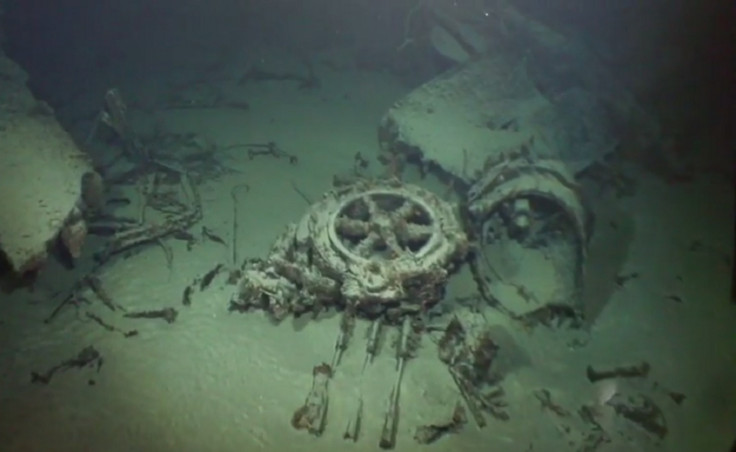Sunken WWII Imperial Japanese mega-submarine mapped and filmed off Pearl Harbour [Photos and video]
A WWII-era Imperial Japanese Navy mega-submarine had been mapped and filmed 18 months after it was first discovered off the coast of Hawaii.
The I-400 submarine was deliberately sunk by outside of Pearl Harbour after the end of the war in order to keep its technological innovations safe from the Soviet Union. The aircraft hanger was large enough to launch three float-plane bombers – the defining feature of the submarine.
Divers found the wreck in December 2013 and it prompted a new search by NHK, the Japanese Broadcasting Corporation, to find missing pieces of the submarine.

During the expedition, the team successfully located, mapped and filmed the submarine's hanger, its navigation platform and its bell – which the team were extremely surprised to come across. The bell was discovered lying near to the conning tower on the seafloor.
Terry Kerby, operations director and chief submarine pilot of the Hawai'i Undersea Research Laboratory, said: "We didn't have detailed enough bottom mapping data to help locate the hangar, conning tower, and other signature features missing from the wreck of the I-400. With only one dive day to try to find anything, we knew there was a strong chance we might spend the dive looking at the barren sandy bottom.

"We made a lucky guess where to start when we approached the main hull of the I-400 from the northwest. Our guess started to pay off when the giant hangar door came into view, followed by the conning tower and hangar. Many items were amazingly intact for something that had ripped out of the hull of a sinking 400-foot-long submarine."
The footage of the I-400 will be included in a special programme that will be broadcast in Japan on 6 May.

James Delgado, director of the NOAA's Maritime Heritage Programme, which helped conduct the survey, said: "The waters off Hawaii not only encompass an important part of Native Hawaiian culture, but are also a veritable museum of our maritime past. As America's ocean science agency, we're committed to working with partners like HURL and NHK to learn more, and to share more of what lies beneath the waves."


© Copyright IBTimes 2025. All rights reserved.






















